Intro
Discover Angular Stomatitis symptoms, causes, and treatments. Learn about mouth corner cracks, oral thrush, and denture-related issues, and find relief from this painful condition with expert advice and remedies.
Angular stomatitis, also known as angular cheilitis, is a common condition that affects the corners of the mouth. It is characterized by red, inflamed, and sometimes cracked skin, which can be painful and uncomfortable. This condition can be caused by a variety of factors, including vitamin deficiencies, fungal infections, and irritants such as tobacco and spicy foods. Understanding the symptoms of angular stomatitis is crucial for proper diagnosis and treatment.
The symptoms of angular stomatitis can vary in severity and may include redness, swelling, and cracking of the skin at the corners of the mouth. In some cases, the condition may also cause bleeding, crusting, or discharge. The affected area may feel tender to the touch, and the pain can be exacerbated by eating, speaking, or smiling. In addition to the physical symptoms, angular stomatitis can also cause emotional distress, as it can affect a person's self-confidence and overall quality of life.
Angular stomatitis is a relatively common condition that can affect anyone, regardless of age or sex. However, it is more prevalent in certain populations, such as the elderly, people with weakened immune systems, and those who wear dentures. The condition can be acute or chronic, and it may be accompanied by other oral health issues, such as dry mouth, gum disease, or tooth decay. In some cases, angular stomatitis can be a symptom of an underlying condition, such as anemia, diabetes, or nutritional deficiencies.
Causes of Angular Stomatitis
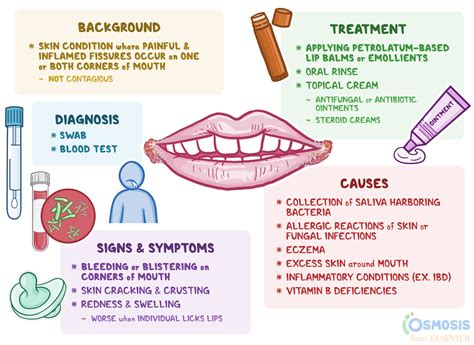
Other causes of angular stomatitis include irritants, such as tobacco, spicy foods, and acidic beverages. These substances can cause inflammation and irritation, especially if they come into contact with the corners of the mouth. Dentures, braces, and other oral appliances can also cause angular stomatitis, especially if they are not properly fitted or if they cause friction on the skin. In some cases, angular stomatitis can be caused by underlying medical conditions, such as anemia, diabetes, or autoimmune disorders.
Types of Angular Stomatitis
There are several types of angular stomatitis, each with its unique characteristics and causes. The most common type is acute angular stomatitis, which is characterized by sudden onset and short duration. This type is often caused by fungal infections or irritants and can be treated with topical antifungal medications or avoidance of the irritant.Chronic angular stomatitis is another type, which is characterized by long duration and recurring symptoms. This type is often caused by underlying medical conditions or vitamin deficiencies and may require more extensive treatment, such as dietary changes or medication. There is also a type of angular stomatitis known as contact stomatitis, which is caused by contact with an allergen or irritant. This type can be treated by avoiding the allergen or irritant and using topical medications to reduce inflammation.
Symptoms of Angular Stomatitis
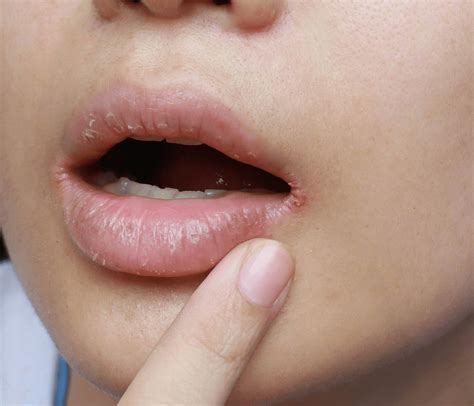
In some cases, angular stomatitis can also cause systemic symptoms, such as fever, headache, or fatigue. These symptoms can be severe and may require immediate medical attention.
Treatment Options for Angular Stomatitis
The treatment of angular stomatitis depends on the underlying cause and severity of the condition. In some cases, the condition can be treated with topical medications, such as antifungal creams or ointments. In other cases, the condition may require more extensive treatment, such as dietary changes or medication.Topical medications, such as hydrocortisone cream or antifungal ointments, can be effective in reducing inflammation and treating fungal infections. In some cases, oral medications, such as antifungal pills or vitamin supplements, may be necessary to treat underlying conditions or vitamin deficiencies.
Dietary changes, such as increasing vitamin intake or avoiding irritants, can also be helpful in managing angular stomatitis. In some cases, the condition may require more extensive treatment, such as surgery or laser therapy, to remove any underlying causes or to promote healing.
Prevention of Angular Stomatitis
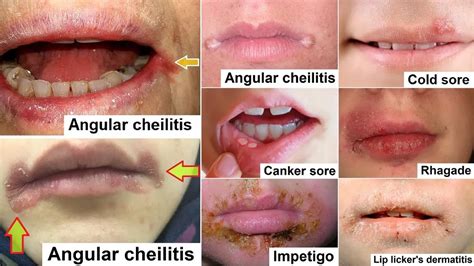
A balanced diet that includes essential vitamins and minerals, such as vitamins B, C, and E, can help maintain healthy skin and mucous membranes. Avoiding irritants, such as tobacco, spicy foods, and acidic beverages, can also help prevent angular stomatitis.
Regular dental checkups and proper fitting of oral appliances, such as dentures and braces, can also help prevent angular stomatitis. In some cases, using topical medications or vitamin supplements can help prevent the condition.
Complications of Angular Stomatitis
If left untreated, angular stomatitis can lead to several complications, including: * Infection: Bacterial or fungal infections can spread to other parts of the body, leading to more severe conditions. * Scarring: Chronic inflammation and scarring can lead to permanent damage to the skin and mucous membranes. * Oral health issues: Angular stomatitis can be a symptom of underlying oral health issues, such as gum disease or tooth decay. * Systemic conditions: In some cases, angular stomatitis can be a symptom of underlying systemic conditions, such as anemia or diabetes.It is essential to seek medical attention if symptoms persist or worsen over time. Early diagnosis and treatment can help prevent complications and promote healing.
Diagnosis of Angular Stomatitis
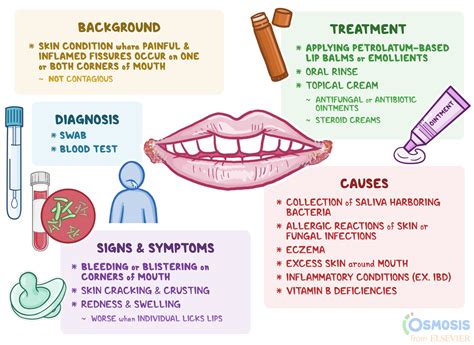
In some cases, a healthcare provider may order laboratory tests, such as blood tests or swab tests, to rule out underlying conditions or infections. A biopsy may also be necessary to confirm the diagnosis.
Treatment Outcomes for Angular Stomatitis
The treatment outcome for angular stomatitis depends on the underlying cause and severity of the condition. In some cases, the condition can be treated effectively with topical medications or dietary changes. In other cases, the condition may require more extensive treatment, such as surgery or laser therapy.With proper treatment, most people can recover from angular stomatitis and experience significant improvement in symptoms. However, in some cases, the condition can recur, and ongoing treatment may be necessary to manage symptoms.
Living with Angular Stomatitis
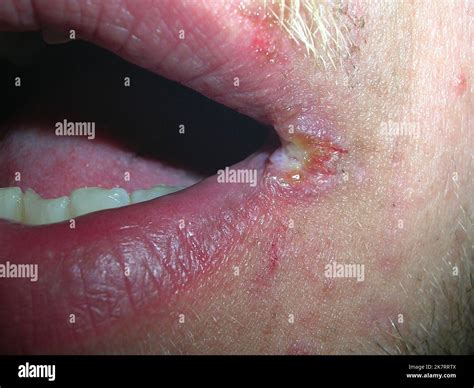
Lifestyle changes, such as increasing vitamin intake, avoiding spicy foods, and quitting tobacco, can also help manage symptoms and prevent recurrence. Ongoing treatment, such as regular dental checkups and follow-up appointments with a healthcare provider, can help monitor the condition and prevent complications.
Coping with Angular Stomatitis
Coping with angular stomatitis can be challenging, especially if symptoms are severe or persistent. However, there are several strategies that can help, including: * Seeking support from family and friends * Joining a support group or online community * Practicing stress-reducing techniques, such as meditation or deep breathing * Focusing on overall health and wellnessIt is essential to seek medical attention if symptoms worsen or persist over time. Early diagnosis and treatment can help prevent complications and promote healing.
What is angular stomatitis?
+Angular stomatitis is a common condition that affects the corners of the mouth, causing redness, inflammation, and sometimes cracking of the skin.
What are the causes of angular stomatitis?
+The causes of angular stomatitis include vitamin deficiencies, fungal infections, irritants, and underlying medical conditions.
How is angular stomatitis treated?
+The treatment of angular stomatitis depends on the underlying cause and severity of the condition and may include topical medications, dietary changes, or surgery.
Can angular stomatitis be prevented?
+Yes, angular stomatitis can be prevented by maintaining good oral hygiene, eating a balanced diet, and avoiding irritants.
What are the complications of angular stomatitis?
+The complications of angular stomatitis include infection, scarring, oral health issues, and systemic conditions.
We hope this article has provided you with a comprehensive understanding of angular stomatitis, its causes, symptoms, treatment options, and prevention strategies. If you have any further questions or concerns, please do not hesitate to comment below or share this article with others who may be experiencing similar issues. Remember, early diagnosis and treatment are crucial for preventing complications and promoting healing. Take the first step towards managing your angular stomatitis today and start enjoying a healthier, happier you.
